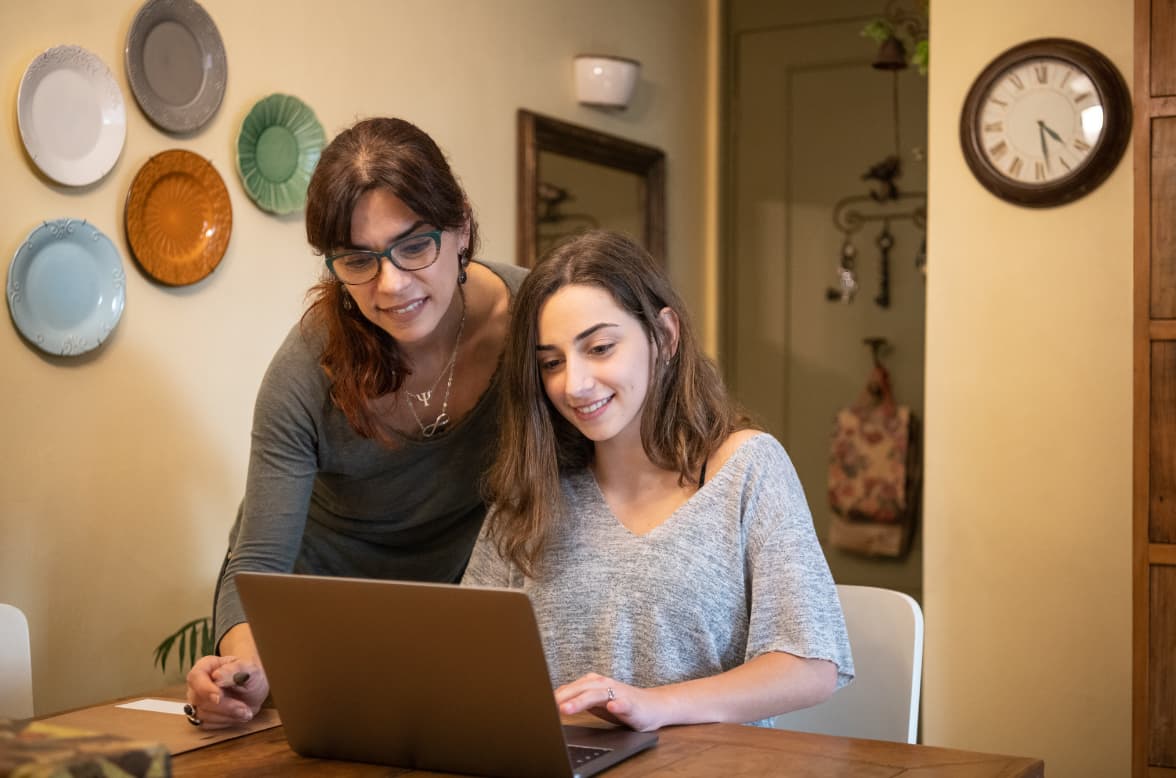Dyscalculia is a learning disorder characterised by impairments in mathematics associated with significant difficulty in understanding numbers and working with mathematical concepts. According to the most recent definition of dyscalculia (2013), it includes problems with:
- Number sense
- Memorisation of arithmetic facts
- Accurate and fluent calculation
- Accurate mathematical reasoning.
Students might struggle with mathematical concepts such as biggest versus smallest. The learner might not understand that the numeral 5 is the same as the word five, and that both represent five separate items of groups of items. They can also struggle to remember mathematical facts. There can be overlap between dyslexia and dyscalculia. Many students have both at the same time.
As students progress through school, some of the characteristics of dyscalculia to look out for are:
- Weaknesses in understanding the meaning of numbers
- Difficulty applying mathematical principles to solve problems
- Not understanding the magnitude of and relationships between numbers (e.g. not knowing which of two digits is larger)
- Lacking effective counting strategies
- Poor fluency in identification of numbers
- Inability to add simple single-digit numbers mentally
- Limitations in working memory capacity
- High levels of anxiety around mathematics.
It is not surprising that the consistent difficulties that students with dyscalculia face when understanding numbers and attempting even simple mathematical processes take a toll on their confidence. Personalised learning can be a real benefit for students with these special learning needs.
Too often, we hear our students say that they are ashamed to ask the questions they need to ask in the classroom. However, with one-to-one tutoring, each student can get the support they need. This will, in turn, build their confidence and engagement.
Cluey Learning has 915+ tutors, many of whom are qualified teachers with extensive experience working with students with special learning needs, and others with specific training in this area. Our tutor-matching algorithms ensure that we can match students with tutors that have the necessary skills and experience.
Cluey also offers ongoing training to our tutors to ensure that they can adapt their knowledge to the specific context of online tutoring and the Cluey platform. Cluey uses research-based studies to inform our planning for all our students.
We have found the following strategies particularly helpful for students with dyscalculia:
- Cluey programs include the use of visual cues, for example, number lines, drawing diagrams to represent a word problem; using arrays (e.g., 3 by 5 grid to show 3 times 5) for multiplication, fractions and area.
- These visual cues also allow students to reduce their memory load, which contributes to a reduction in stress and they are less likely to give up when coming up against an unfamiliar task.
- Research shows that students diagnosed with dyscalculia may need additional support understanding place value. This is why Cluey has placed a strong focus on place value in the early years, which is revised repeatedly as students move through to high school.
- We know that students who speak their thoughts aloud are more likely to develop understanding and improve their learning. So, we incorporate mathematical language into all our programs to encourage students with dyscalculia to practice their language and articulate their thinking. Cluey programs offer many opportunities to discuss what students are thinking through introductory investigations in the primary programs and ‘explain’ and ‘justify’ questions as they move into high school.
- Session review is very helpful. We encourage our tutors to review learning at the end of each session and also review what was learned previously in the next session. This is helpful for all students, and really assists students with dyscalculia to connect new information with prior knowledge.
- Scaffolding learning helps students, and so Cluey’s focus on setting learning goals and reviewing them at the end of the session maintains learning continuity and helps students to understand the organisation of the material they are learning.
- Cluey’s focus on post-session practice is important for students to consolidate and apply what they have learned, and also for tutors to identify what content needs to be revisited. Students with dyscalculia need to be encouraged to do as much practice in Mathematics as possible to build fluency and familiarity.
- Cluey’s integration of audio and video with an interactive whiteboard ensures that learning is both visual and aural. It is important for tutors of students with dyscalculia to maintain an ordered whiteboard with as little visual distraction as possible. We also train our tutors to use larger font sizes and the appropriate whiteboard tools to organise material and help students to identify the most important concepts and information.
Tutoring offers personal attention and the opportunity to address specific learning needs, which make it highly effective for students with special learning needs such as dyscalculia. One of the key benefits of tutoring for these students is that they acquire a better understanding of themselves as learners. Rather than feeling ashamed and reluctant to draw attention to themselves, in a live learning session with a trained and experienced tutor, students with dyscalculia can learn how to manage their unique approach to learning and play to their strengths.
As Cluey’s Head of Mathematics, Karen McDaid, says, “Our single goal is to improve confidence and competence in mathematics for all students, which is why at every point, our students are central to our planning and programming.”
